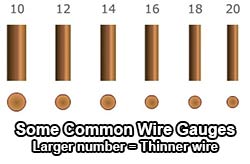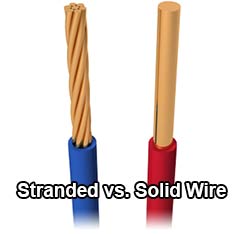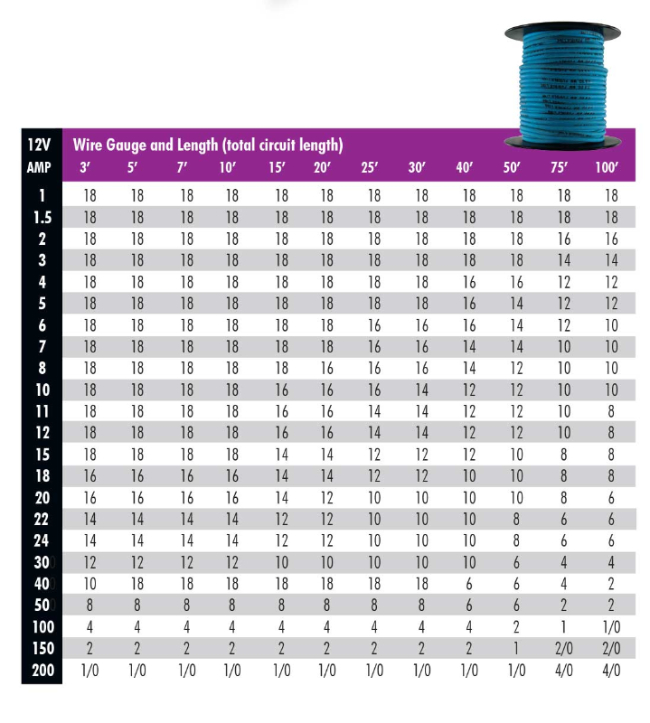 "Gauge" is a system for measuring wire thickness. It can be confusing because decreasing gauge numbers represent increasing wire diameter. For instance 10 gauge wire is thicker than 18 gauge wire. The naming has its roots in the number of times wire was drawn over a die to create a certain thickness. For instance, 10 gauge wire was drawn over the die ten times. Thinner wire required more draws. To make things more confusing, once the wire reaches "1" gauge, the numbers start going up again but are listed as 1/0, 2/0 etc. So 1/0 gauge wire is thicker than 1 gauge wire.
"Gauge" is a system for measuring wire thickness. It can be confusing because decreasing gauge numbers represent increasing wire diameter. For instance 10 gauge wire is thicker than 18 gauge wire. The naming has its roots in the number of times wire was drawn over a die to create a certain thickness. For instance, 10 gauge wire was drawn over the die ten times. Thinner wire required more draws. To make things more confusing, once the wire reaches "1" gauge, the numbers start going up again but are listed as 1/0, 2/0 etc. So 1/0 gauge wire is thicker than 1 gauge wire.
There used to be no standard to gauge listings, so one manufacturer's 14 gauge might have been different than anothers. This was because 14 draws over one manufacturer's dies might yeild a different result than 14 draws over another manufacturer's dies. There are two main standards now. AWG is "American Wire Gauge" and the listing of 'AWG' is often used generically to mean gauge. SAE is "Society of Automotive Engineers" and is specific to automotive wiring. For most purposes they are close enough that the differences don't matter, however SAE tends to be just a bit thinner than AWG. FYI, although our automotive wire may state 'AWG' in the product name, it is made to current SAE specs.
 One thing gauge doesn't address is stranding. The gauge is based on what the wire thickness would be if comprised of one solid strand. Stranded wire offers several benefits over solid wire. More strands increases the flexibility of the wire, so it is preferred in applications where wire must bend, flex, or absorb vibration (like in a car or appliance vs. the walls of your house). Stranded wire also increases the surface area of the wire allowing it to carry more voltage than the equivalent solid/single strand wire.
One thing gauge doesn't address is stranding. The gauge is based on what the wire thickness would be if comprised of one solid strand. Stranded wire offers several benefits over solid wire. More strands increases the flexibility of the wire, so it is preferred in applications where wire must bend, flex, or absorb vibration (like in a car or appliance vs. the walls of your house). Stranded wire also increases the surface area of the wire allowing it to carry more voltage than the equivalent solid/single strand wire.
When determining the proper wire gauge for your application, you should go to thicker (lower number) wire gauges as you increase the amperage carried (add more items to a circuit) or increase the the length of the wire. When in doubt, go to the next heavier gauge. Running too light / thin wire can increase resistance and lead to failures or even fires. Also pay attention to the source of the wire - gauge doesn't tell you everything. Many generic/discount wire manufacturers cheat the gauge spec a bit, or skimp on the copper content to reduce costs.
Here is a chart of suggested wire gauges for different distances and amperage. If you are at all unsure, please consult a professional.
